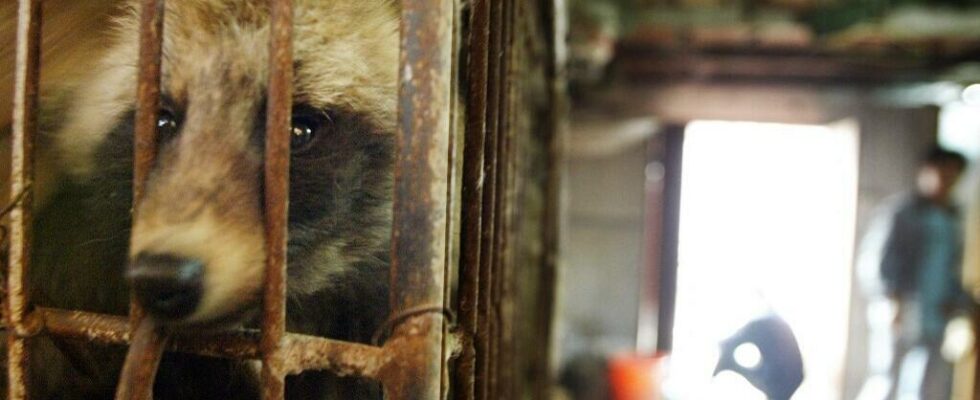In a study published Thursday, September 19 in the journal Cellan international research team has revealed the animal species most likely to have served as intermediate hosts for SARS-CoV-2, the virus responsible for the Covid-19 pandemic. These would include raccoon dogs and civets, the team of researchers was able to identify thanks to genetic sequencing of hundreds of samples taken. Florence Débarre, a CNRS researcher at the Institute of Ecology and Environmental Sciences in Paris and part of the study, insists that ” all available data point to a natural origin linked to the sale of wild animals “. Interview.
4 mins
RFI: What was the study you led able to identify? ?
Florence Débarre: We have done work that identifies the animal species present at the Huanan market in Wuhan at the end of 2019, and which are potentially involved in the emergence of the pandemic. These animal species include raccoon dogs and civets. These are species that were already involved in the emergence of SARS in 2002-2004. These animals were present in Wuhan at the end of 2019, and they are found in the corner of the market where there are a lot of SARS-CoV-2 viruses, the virus that causes Covid-19.
So you are saying that these are raccoon dogs and civets, and not bats or pangolins, as has been said.
Our study describes what was happening in Wuhan at the end of 2019. It does not allow us to trace the entire chain that led to the presence of SARS-CoV-2, the virus that causes Covid-19. Viruses close to SARS-CoV-2 are circulating in bat populations in the south of the China and it is likely that bats were involved in the long chain of events that gave rise to the pandemic.
But there were apparently no bats in the Wuhan market at the end of 2019. The same goes for pangolins: there were none in the samples taken at the market, so it is likely that there were no pangolins in the market.
On the other hand, there are closely related viruses that have been detected in pangolins seized at customs and it is not excluded that pangolins intervene at some point or another in the long evolutionary history that gave rise to the emergence of the pandemic.
What lessons can you learn from your study for the future? ?
I see our study first as a historical study to understand the sources of an event that has turned our lives upside down. For the future, whatever the origin of the Covid-19 pandemic, we have an idea of what must be done to limit the emergence of future pandemics. This involves both limiting risky situations with animals; therefore avoiding concentrations of animals in the heart of urban centers.
But it also means paying attention to the type of experiments that are carried out in research laboratories and ensuring that the biosafety conditions in these laboratories are sufficient. Whatever the emergence of the Covid-19 pandemic, this does not imply that the next one will be of the same nature. This is why I see our work above all as historical work.
Was it difficult to conduct this study? ?
Yes, it has been difficult, because the subject is close to the hearts of many people. Many people believe that the origin of the pandemic is linked to research activities. There are many conspiracy theories that mean that when you work on the subject and conclude that all the data points to a natural origin, you can become, as is the case for me and my colleagues, the target of attacks and harassment on the internet.
There are several possible scenarios for the origin of the pandemic, and one of them involves an origin linked to research work in Wuhan and this is a legitimate hypothesis. It is possible and it deserved to be looked into and studied. It turns out that at the moment, all the available data points to a natural origin linked to the sale of wild animals at the Huanan market. Beyond the coincidence of the presence of a laboratory in the city, there is no data that points to an origin linked to research activities.
Also readWHO on mission to Wuhan, story of virus origins locked down by Beijing
